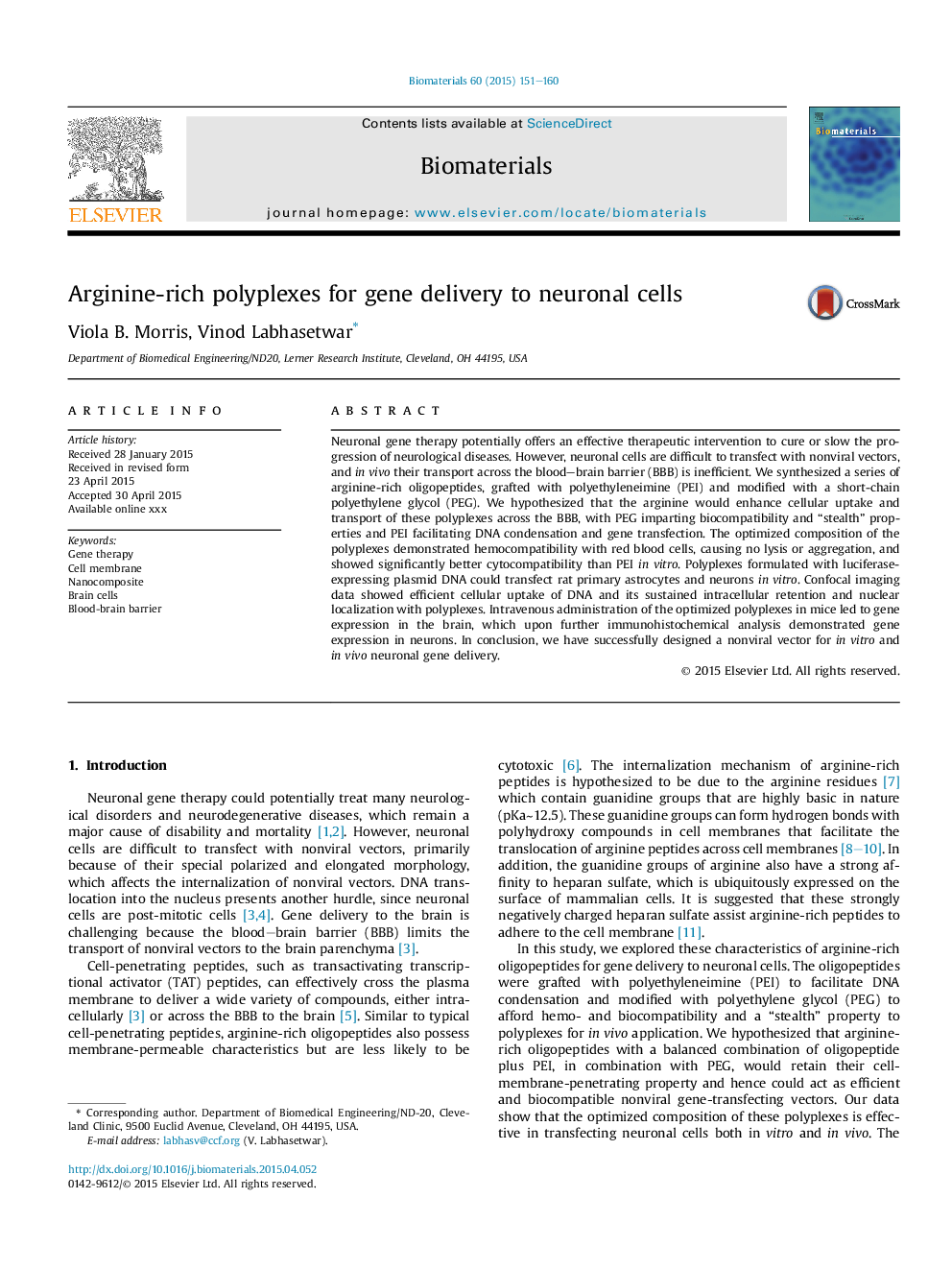| Article ID | Journal | Published Year | Pages | File Type |
|---|---|---|---|---|
| 6485653 | Biomaterials | 2015 | 10 Pages |
Abstract
Neuronal gene therapy potentially offers an effective therapeutic intervention to cure or slow the progression of neurological diseases. However, neuronal cells are difficult to transfect with nonviral vectors, and in vivo their transport across the blood-brain barrier (BBB) is inefficient. We synthesized a series of arginine-rich oligopeptides, grafted with polyethyleneimine (PEI) and modified with a short-chain polyethylene glycol (PEG). We hypothesized that the arginine would enhance cellular uptake and transport of these polyplexes across the BBB, with PEG imparting biocompatibility and “stealth” properties and PEI facilitating DNA condensation and gene transfection. The optimized composition of the polyplexes demonstrated hemocompatibility with red blood cells, causing no lysis or aggregation, and showed significantly better cytocompatibility than PEI in vitro. Polyplexes formulated with luciferase-expressing plasmid DNA could transfect rat primary astrocytes and neurons in vitro. Confocal imaging data showed efficient cellular uptake of DNA and its sustained intracellular retention and nuclear localization with polyplexes. Intravenous administration of the optimized polyplexes in mice led to gene expression in the brain, which upon further immunohistochemical analysis demonstrated gene expression in neurons. In conclusion, we have successfully designed a nonviral vector for in vitro and in vivo neuronal gene delivery.
Related Topics
Physical Sciences and Engineering
Chemical Engineering
Bioengineering
Authors
Viola B. Morris, Vinod Labhasetwar,
